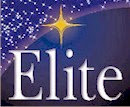 |
| Fanning, EMC Lab Manger |
Uncertainty budgets…why??? I hear a lot of people in the EMC
industry complain that uncertainty budgets are painful and not necessarily worth
the time expended. That is a little bit understandable since we go through all
the work to generate uncertainty budgets but don’t generally use them during
everyday measurements. However, uncertainty budgets are necessary and can be
pretty good tools for the laboratory.
CISPR 16 Compliant Measurements - Uncertainty budgets must be
done for CISPR 16 compliant measurements. If the uncertainty budget of the
laboratory meets the Ucispr values shown in Table 1 of CISPR 16-4-2,
then no correction of the data is needed to determine EUT compliance. If the
uncertainty budget of the laboratory does not meet the UCISPR values
shown in Table 1 of CISPR 16-4-2, then the measurement must be adjusted by the
difference (Ulab - Ucispr) to determine if an EUT complies
with the standard.
EMC Lab Personnel Training - Uncertainty budgets make the
laboratory realize how good (or not so good) their measurements really are. We
all need to have a good understanding of how the various parts of the test
system contribute to uncertainty. We also need to know how measurement uncertainty
can be reduced by purchasing higher quality (lower uncertainty) equipment. If
the lab management and personnel understand the contributing factors, then the
lab can do a better job at reducing measurement uncertainty (providing a better
service to their customers).
Customer Education and/or Lab Differentiation - Many years ago
a customer told me that he wanted a 200V/m radiated immunity test “no more no
less” says the customer. The young electrical engineer did not realize that a
radiated immunity test is not accurate to within 0.1 V/m (although the measurement
instrument tells us so). Customers also wonder why a radiated emissions
measurement made in one chamber is slightly different (a couple of dB) from a
measurement made in another chamber. The people who make EMC measurements
everyday (and understand measurement uncertainty) know that this is pretty good
chamber-to-chamber or lab-to-lab repeatability. When you can show a customer how
the accuracy of all parts of the system contribute to measurement uncertainty
and that your uncertainty is better than the “standard” (or another lab), then
that helps to educate the customer and differentiate your laboratory from the
competition.
So the next time you have to work on uncertainty budgets,
don’t think about how painful they are. Think about how they can be beneficial
to your lab, personnel, and business. This will make the time (and money)
expended more palatable.
Do you have any questions about EMC Lab Management, EMC Standard Changes, or other related topics? Please share your comments or questions below and this week's expert, Craig Fanning, will get back to you as soon as possible.
Do you have any questions about EMC Lab Management, EMC Standard Changes, or other related topics? Please share your comments or questions below and this week's expert, Craig Fanning, will get back to you as soon as possible.














